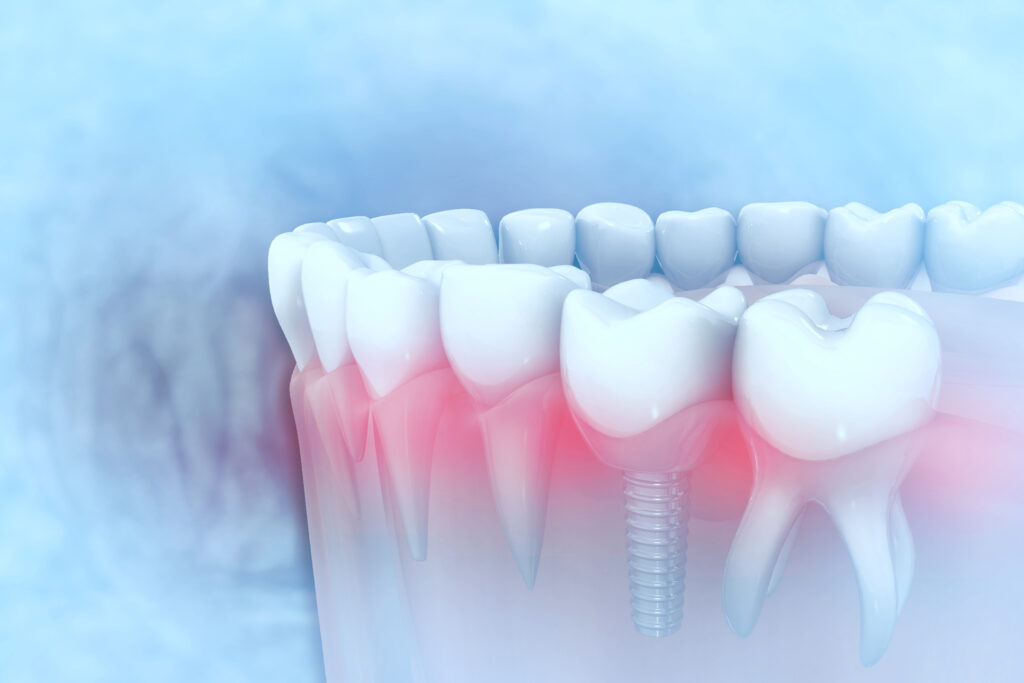Dental implant surgery is an increasingly popular way to replace missing teeth in the jaws. Dental implants are designed to provide a foundation for replacement teeth that look, feel and function just as your natural teeth would. Treatment can include the replacement of a single tooth or it can offer a welcome alternative to ill-fitting dentures or bridgework that is failing, resulting in the loss of supporting teeth for the bridgework. Dental implants are an option to aid in supporting denture stability (over-dentures) or implants can be used to support bridgework when there is a lack of natural tooth roots.
Who is it for?
The reasons for losing teeth are many and varied, yet no matter what the cause, their loss can affect both appearance (particularly if they are at the front of the mouth), as well as impacting on the ability to eat food effectively.

The reasons for losing teeth are many and varied, yet no matter what the cause, their loss can affect both appearance (particularly if they are at the front of the mouth), as well as impacting on the ability to eat food effectively.
The Procedure
This routine, well established procedure replaces the roots of a tooth, or a number of teeth, with artificial replacements that look, feel and function just like real ones. Implants are titanium ‘screws’ that are put in place in the upper or lower jaws to act as supports to which individual or multiple teeth can then be attached. They can also be used to connect to dentures to increase their stability if that is required.
The implants fuse to the bone, in a process called ‘osseointegration’, which is the formation of a strong contact between the surface of an implant and the surrounding bone tissue. The resulting interface is capable of withstanding the normal forces generated by teeth during chewing and grinding down food.
This osseointegration process can take 2-6 months to occur after placement, because it takes time for the bone to heal tightly around the implant. In some cases, teeth can be placed on the implants as soon as they are inserted, but often, a healing period is needed to allow osseointegration, before the teeth are attached to the implant.
In most cases, providing implants is a team effort, with your OMS Surgeon placing the implant in the bone, and then a restorative dentist or specialist prosthodontist fitting the final teeth. In some cases, additional bone may be needed prior to, or during, the implant placement – and your OMS surgeon will discuss this with you beforehand, when the procedure is being planned.

Locate an OMS in your area
Ready for the next step? Find an ANZAOMS member in your area within Australia and New Zealand today.

Is oral and maxillofacial surgery right for you?
We’ve put together a handy list of questions for you to discuss with your surgeon.
Find out more information on other procedures
Note: The information covered within this web page and across this website is not intended as a substitute for professional medical or dental advice, diagnosis, or treatment. It is listed to provide you with a general overview to help you communicate effectively when you seek the advice of an oral and maxillofacial surgeon.

